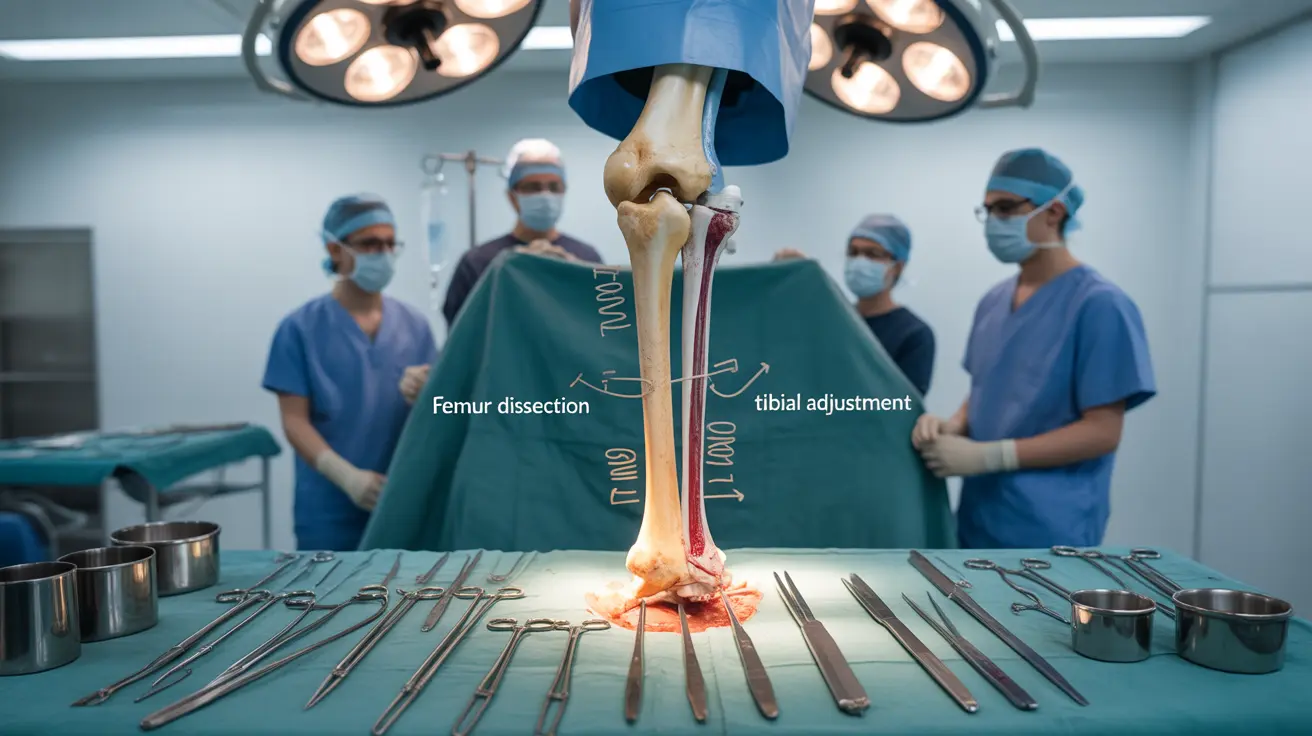Height reduction surgery, also known as limb shortening surgery, is a complex medical procedure that some individuals consider for various personal or medical reasons. While this surgery is relatively uncommon, it's important to understand its implications, requirements, and potential outcomes before making any decisions.
This comprehensive guide will explore the essential aspects of height reduction surgery, including the procedure itself, recovery process, potential risks, and important psychological considerations that patients need to be aware of.
What is Height Reduction Surgery?
Height reduction surgery is a specialized orthopedic procedure that involves shortening the long bones in the legs, typically the femur (thighbone) and/or tibia (shinbone). The procedure is performed under general anesthesia and requires precise surgical techniques to ensure optimal results.
Medical and Physical Requirements
Before considering height reduction surgery, patients must meet specific medical criteria and undergo thorough physical evaluations. These typically include:
- Skeletal maturity (completed bone growth)
- Good overall health status
- Normal bone density
- No underlying medical conditions that could complicate surgery
- Adequate bone length to allow for reduction
The Surgical Procedure
The surgery involves several complex steps performed by experienced orthopedic surgeons:
Surgical Technique
During the procedure, surgeons carefully remove a section of bone from the legs. The remaining bone ends are then reunited using specialized medical hardware such as plates and screws to ensure proper healing and alignment.
Surgical Planning
Advanced imaging and precise measurements are essential for determining the exact amount of bone to be removed while maintaining proper body proportions and functionality.
Recovery and Rehabilitation Process
The recovery journey after height reduction surgery is extensive and requires significant commitment:
Initial Recovery Phase
Patients typically spend several days in the hospital for monitoring and initial recovery. Pain management and wound care are crucial during this period.
Rehabilitation Timeline
The complete recovery process can take several months and includes:
- Initial period of non-weight bearing
- Gradual introduction of physical therapy
- Progressive weight-bearing exercises
- Regular follow-up appointments
- Monitoring of bone healing through X-rays
Psychological Aspects and Considerations
The psychological component of height reduction surgery is as important as the physical aspects. Patients must undergo thorough psychological evaluation and counseling to ensure they have realistic expectations and are mentally prepared for the procedure and recovery process.
Frequently Asked Questions
What are the potential risks and complications of height reduction surgery?
Height reduction surgery carries several risks, including infection, nerve damage, blood clots, improper bone healing, chronic pain, and potential mobility issues. There's also a risk of asymmetry or complications with the surgical hardware. Careful surgical planning and following post-operative instructions can help minimize these risks.
How long does it typically take to recover and return to normal activities after height reduction surgery?
Full recovery typically takes 6-12 months. Initial hospital stay is usually 3-5 days, followed by several weeks of non-weight bearing activity. Patients gradually return to normal activities over several months, with physical therapy playing a crucial role in rehabilitation.
Are there any non-surgical methods to reduce height, or is surgery the only option?
There are no effective non-surgical methods to reduce height once skeletal maturity is reached. While some alternative therapies might claim to reduce height, these claims are not scientifically supported. Surgery is currently the only method to permanently reduce height.
What are the psychological requirements for undergoing height reduction surgery, and how does it affect mental health?
Patients must undergo comprehensive psychological evaluation to ensure they have realistic expectations and are mentally prepared for the procedure. The evaluation typically assesses body image concerns, motivation for surgery, and overall mental health stability. Post-surgery psychological support is also important for optimal outcomes.
Can height reduction surgery be performed on both legs at the same time, or does it need to be done in stages?
While it's technically possible to perform surgery on both legs simultaneously, many surgeons prefer a staged approach to reduce risks and improve recovery outcomes. The decision depends on factors such as the amount of reduction desired, the patient's overall health, and the surgeon's recommendation.




